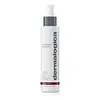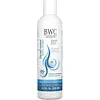What's inside
What's inside
 Key Ingredients
Key Ingredients

 Benefits
Benefits

 Concerns
Concerns

 Ingredients Side-by-side
Ingredients Side-by-side

Water
Skin ConditioningButylene Glycol
HumectantPEG-40
HumectantHydrogenated Castor Oil
EmollientArginine/Lysine Polypeptide
Skin ConditioningAloe Barbadensis Leaf Juice
Skin ConditioningSodium Lactate
BufferingSodium PCA
HumectantSorbitol
HumectantProline
Skin ConditioningDipotassium Glycyrrhizate
HumectantMethyl Gluceth-20
HumectantCamellia Sinensis Leaf Extract
AntimicrobialSodium Carboxymethyl Beta-Glucan
CleansingLecithin
EmollientMagnesium Ascorbyl Phosphate
AntioxidantTocopherol
AntioxidantPalmitoyl Tripeptide-5
Skin ConditioningBambusa Vulgaris Leaf/Stem Extract
HumectantRose Flower Oil
MaskingPisum Sativum Extract
Skin ConditioningCupressus Sempervirens Leaf Oil
MaskingCymbopogon Martini Oil
MaskingGlucosamine Hcl
Cymbopogon Schoenanthus Oil
MaskingGlycerin
HumectantEucalyptus Globulus Leaf Oil
PerfumingDisodium EDTA
Caprylic/Capric Triglyceride
MaskingCitrus Limon Peel Extract
EmollientHelianthus Annuus Seed Oil
EmollientRosa Damascena Flower Oil
MaskingEugenia Caryophyllus Flower Oil
MaskingAniba Rosodora Wood Oil
AstringentCitrus Limon Peel Oil
MaskingPelargonium Graveolens Flower Oil
MaskingCitronellol
PerfumingEugenol
PerfumingGeraniol
PerfumingLimonene
PerfumingLinalool
PerfumingBenzyl PCA
HumectantPhenoxyethanol
PreservativeWater, Butylene Glycol, PEG-40, Hydrogenated Castor Oil, Arginine/Lysine Polypeptide, Aloe Barbadensis Leaf Juice, Sodium Lactate, Sodium PCA, Sorbitol, Proline, Dipotassium Glycyrrhizate, Methyl Gluceth-20, Camellia Sinensis Leaf Extract, Sodium Carboxymethyl Beta-Glucan, Lecithin, Magnesium Ascorbyl Phosphate, Tocopherol, Palmitoyl Tripeptide-5, Bambusa Vulgaris Leaf/Stem Extract, Rose Flower Oil, Pisum Sativum Extract, Cupressus Sempervirens Leaf Oil, Cymbopogon Martini Oil, Glucosamine Hcl, Cymbopogon Schoenanthus Oil, Glycerin, Eucalyptus Globulus Leaf Oil, Disodium EDTA, Caprylic/Capric Triglyceride, Citrus Limon Peel Extract, Helianthus Annuus Seed Oil, Rosa Damascena Flower Oil, Eugenia Caryophyllus Flower Oil, Aniba Rosodora Wood Oil, Citrus Limon Peel Oil, Pelargonium Graveolens Flower Oil, Citronellol, Eugenol, Geraniol, Limonene, Linalool, Benzyl PCA, Phenoxyethanol
Water
Skin ConditioningGlycerin
HumectantPolysorbate 20
EmulsifyingAloe Barbadensis Leaf Juice
Skin ConditioningCitric Acid
BufferingSodium Citrate
BufferingPanthenol
Skin ConditioningSodium PCA
HumectantAllantoin
Skin ConditioningCucumis Sativus Extract
Skin ConditioningTocopherol
AntioxidantMagnesium Ascorbyl Phosphate
AntioxidantRetinyl Palmitate
Skin ConditioningCamellia Sinensis Extract
AntioxidantSorbitol
HumectantHydrogenated Castor Oil
EmollientPhenoxyethanol
PreservativeEthylhexylglycerin
Skin ConditioningViola Odorata Oil
MaskingPelargonium Graveolens Oil
MaskingLavandula Hybrida Oil
EmollientCymbopogon Martini Oil
MaskingWater, Glycerin, Polysorbate 20, Aloe Barbadensis Leaf Juice, Citric Acid, Sodium Citrate, Panthenol, Sodium PCA, Allantoin, Cucumis Sativus Extract, Tocopherol, Magnesium Ascorbyl Phosphate, Retinyl Palmitate, Camellia Sinensis Extract, Sorbitol, Hydrogenated Castor Oil, Phenoxyethanol, Ethylhexylglycerin, Viola Odorata Oil, Pelargonium Graveolens Oil, Lavandula Hybrida Oil, Cymbopogon Martini Oil
 Reviews
Reviews

Ingredients Explained
These ingredients are found in both products.
Ingredients higher up in an ingredient list are typically present in a larger amount.
Aloe Barbadensis Leaf Juice comes from leaves of the aloe plant. Aloe Barbadensis Leaf Juice is best known for helping to soothe sunburns. It is also anti-inflammatory, moisturizing, antiseptic, and can help heal wounds.
Aloe is packed with good stuff including Vitamins A, C, and E. These vitamins are antioxidants, which help fight free-radicals and the damage they may cause. Free-radicals are molecules that may damage your skin cells, such as pollution.
Aloe Barbadensis Leaf Juice also contains sugars. These sugars come in the form of monosaccharides and polysaccharides, folic acid, and choline. These sugars are able to help bind moisture to skin.
It also contains minerals such as calcium, 12 anthraquinones, fatty acids, amino acids, and Vitamin B12.
Learn more about Aloe Barbadensis Leaf JuiceCymbopogon Martini Oil is the volatile oil expressed from the herb palmarosa, Cymbopogon martini, Gramineae
Glycerin is already naturally found in your skin. It helps moisturize and protect your skin.
A study from 2016 found glycerin to be more effective as a humectant than AHAs and hyaluronic acid.
As a humectant, it helps the skin stay hydrated by pulling moisture to your skin. The low molecular weight of glycerin allows it to pull moisture into the deeper layers of your skin.
Hydrated skin improves your skin barrier; Your skin barrier helps protect against irritants and bacteria.
Glycerin has also been found to have antimicrobial and antiviral properties. Due to these properties, glycerin is often used in wound and burn treatments.
In cosmetics, glycerin is usually derived from plants such as soybean or palm. However, it can also be sourced from animals, such as tallow or animal fat.
This ingredient is organic, colorless, odorless, and non-toxic.
Glycerin is the name for this ingredient in American English. British English uses Glycerol/Glycerine.
Learn more about GlycerinHydrogenated Castor Oil is created by adding hydrogen to castor oil. This helps stabilize the castor oil and raises the melting point. At room temperature, hydrogenated castor oil is solid.
Castor Oil helps moisturize the skin. It is rich in a fatty acid called ricinoleic acid. This fatty acid helps prevent moisture loss on the skin. This helps keep your skin soft and hydrated. Ricinoleic acid also has anti-inflammatory and pain reducing properties.
As a wax-like substance, Hydrogenated Castor Oil acts as an emollient. Emollients help keep your skin stay soft and smooth by creating a barrier. This barrier helps trap moisture.
Hydrogenated Castor Oil may not be fungal-acne safe. We recommend speaking with a professional.
Learn more about Hydrogenated Castor OilMagnesium Ascorbyl Phosphate (MAP) is a form of Vitamin C and is an antioxidant. It can help to reduce redness, improve skin texture, reduce the effects of aging, reduce the visibility of dark spots, and brighten skin.
MAP is created by combining ascorbic acid with magnesium salt. While MAP more gentle on the skin than ascorbic acid, it is thought to be less easily-absorbed into the skin.
Due to MAP's stability up to a pH level of 7, it is more stable to air and sunlight exposure than ascorbic acid. The best pH range for MAP is between 5 and 6.
Like other forms of Vitamin C, MAP has been shown to help reduce hyperpigmentation and simulate collagen production.
As an antioxidant, it helps protect your skin against the signs of aging.
Learn more about Magnesium Ascorbyl PhosphatePhenoxyethanol is a preservative that has germicide, antimicrobial, and aromatic properties. Studies show that phenoxyethanol can prevent microbial growth. By itself, it has a scent that is similar to that of a rose.
It's often used in formulations along with Caprylyl Glycol to preserve the shelf life of products.
Sodium PCA is the sodium salt of pyroglutamic acid. It is naturally occurring in our skin's natural moisturizing factors where it works to maintain hydration.
The PCA stands for pyrrolidone carboxylic acid, a natural amino acid derivative.
This ingredient has skin conditioning, anti-inflammatory, and humectant properties. Humectants help hydrate your skin by drawing moisture from the air. This helps keep your skin moisturized.
Learn more about Sodium PCASorbitol is a sugar alcohol. It is a hydrating and moisturizing agent created from the reduction process of glucose.
Most sorbitol is usually made from potato starch. It is also found in fruits such as apples and pears.
As a humectant, Sorbitol helps draw water to the skin. This helps keep the skin hydrated. Sorbitol also helps create a thicker texture in products. You might find sorbitol in your toothpaste and other gels.
It is a non-irritating ingredient that is great for those with dry skin.
Sorbitol is a prebiotic. It helps promote the growth of healthy bacteria on your skin. The bacteria on your skin form a microbiome. This microbiome helps protect your skin from infection and harmful bacteria.
Learn more about SorbitolTocopherol (also known as Vitamin E) is a common antioxidant used to help protect the skin from free-radicals and strengthen the skin barrier. It's also fat soluble - this means our skin is great at absorbing it.
Vitamin E also helps keep your natural skin lipids healthy. Your lipid skin barrier naturally consists of lipids, ceramides, and fatty acids. Vitamin E offers extra protection for your skin’s lipid barrier, keeping your skin healthy and nourished.
Another benefit is a bit of UV protection. Vitamin E helps reduce the damage caused by UVB rays. (It should not replace your sunscreen). Combining it with Vitamin C can decrease sunburned cells and hyperpigmentation after UV exposure.
You might have noticed Vitamin E + C often paired together. This is because it is great at stabilizing Vitamin C. Using the two together helps increase the effectiveness of both ingredients.
There are often claims that Vitamin E can reduce/prevent scarring, but these claims haven't been confirmed by scientific research.
Learn more about TocopherolWater. It's the most common cosmetic ingredient of all. You'll usually see it at the top of ingredient lists, meaning that it makes up the largest part of the product.
So why is it so popular? Water most often acts as a solvent - this means that it helps dissolve other ingredients into the formulation.
You'll also recognize water as that liquid we all need to stay alive. If you see this, drink a glass of water. Stay hydrated!
Learn more about Water